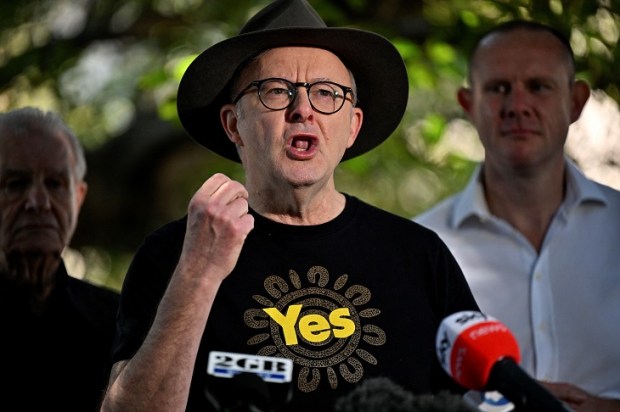News media prides itself on being even-handed when reporting on serious issues and crimes. Of course, it doesn’t always do even-handed reporting and, certainly, the dramatic headlines used to generate click-through to news articles often lack balance and perspective.
An exception to balanced and considered reporting is often found when a high-profile person passes away. In such events, there’s a tacit media protocol that the focus of postmortem mentions largely stay on a deferential – almost soviet – account of the person’s positive achievements.
But the passing of George Pell evidenced a departure from this protocol with an array of reputation assassins metaphorically sacking the sepulchre of this now passed – and vilified – priest, even while Pell was still a little bit warm.
While this piece is specifically about how media and search engines ‘frame’ personage obituaries, I’m braced that some may rail even on the mere mention of the late Cardinal’s name. That’s because, as many digital media reports readily insist, the dead Cardinal was ‘divisive’, ‘polarising’, and someone to provoke ‘mixed reactions’.
It would be good if readers didn’t presume this is a defence of George Pell’s shortcomings: it isn’t.
Instead, I’d like to understand the subjective inconsistencies in ‘media framing’ after the deaths of other personages seen, like Pell, as either cultural, national, or spiritual leaders of a fashion.
When Queen Elizabeth II died, most media coverage offered a confected mix of forelock-tugging, and fawning reverence towards an enduring monarch. Apart from grumblings that emerged some days later, not so much – at least in the UK domestic press – was cast up about Elizabeth presiding over an empire which had impacted multiple communities from Cyprus to Ireland, Kenya to Malaysia, and even right here in Australia – in pretty negative ways.
For the Queen, her death’s narrative framing was as an unblemished and stoic matriarch. But did her regime’s business not also create division, polarisation, or mixed reactions, too?
Think of other leaders with allegedly problematic behaviours: Henry Ford’s antisemitism; Coco Chanel’s supposed Nazi sympathies; Steve Jobs’ alleged unprincipled employee bullying; revelations about David Bowie’s claimed coupling with teenage girls.
Here’s a quick exercise: Google any of the aforementioned names and simply add ‘obituary’. See the results? Now, do the same for George Pell and add ‘obituary’.
Even here in Australia, the death of much-admired and feted thespian, Uncle Jack Charles, was met with outpourings of grief for this star of the arts stage and screen. When the New York Times published an obituary that mentioned Charles’ 22 crime convictions (mostly for burglary and drug offences) they were met with voluble criticism. The New York Times swiftly re-edited the piece to dial down the criminal part of the impish Uncle’s diverse life endeavours. They bowed to protestations against their ill-phrased attempt at a balanced obituary.
Most media titles indulge in postmortem airbrushing when the flawed celebs we think we know and love shrug off this mortal coil. There must be reasons behind that practice.
But for Pell, some in media seem determined to re-document – with forensic care – the crimes for which he was wrongly imprisoned (as the courts eventually decreed) plus the mismanagement for which he was fairly pilloried – or Pelloried.
This exhaustively balanced inventory is not so commonplace in editorial obituaries.
Less of the media coverage around Pell’s death carries a dominant ‘framing’ that Pell was a man of solid faith who was wrongly imprisoned. Instead, a grimy inference persists in many articles and search engine headlines that Pell was a shadowy jailbird who slipped the metaphorical noose.
So, what really accounts for the variance in how news outlet obituaries are framed or penned?
Is it a matter of recency and timing? With Pell, is it a bit of click-bait meets anti-Christian bias? As someone raised in the sectarian surrounds of the West of Scotland, I’m attuned to any dog whistle of religious rancour. But Australia has long left behind the anti-Catholic bias of Dr John Dunmore Lang’s 1841 pamphlet: Is This Colony to be Transformed into a Province of Popedom? Right?
Is it about the nature of the deceased wrongs? Are land grabs, military murders, and some citizen oppression all airbrush-able? Are drug-fuelled thefts, business bullying, Nazi sympathising, and the defrocking of underage groupies easily erasable, too?
Such unpleasantness has been glossed over or omitted in many postmortem editorials.
Search engines don’t do bereavement politesse; they simply find and resurface digitally published content. Of course, they find content based on keywords and terms associated with the search subject. And that sword is double-edged as any entity can be ‘tagged’ with specific phrases and terms.
The terminology and SEO descriptors appended by media to their stories become defining factors in how the ‘Googling’ public perceives the character and legacy of any of our departed eminents.
And that’s when search engines become definitive documents and records for how the deceased will be forever remembered.
If there is a variance in the content and tone of news obituaries, it derives from the deliberations that occur when media outlets pick and choose which portions of a personage’s life to focus on subsequent to their passing. And those they decide to skim over.
In other words, digitally speaking ill of the dead is a selective and subjective form of reputation framing.
And if it is done on purpose, what is driving the decision to observe postmortem propriety or abandon it?
Gerry McCusker is the author of ‘Public Relations Disasters’ and the owner of crisis simulation and crisis planning technology, The Drill.

























